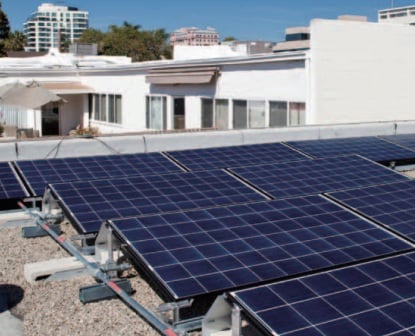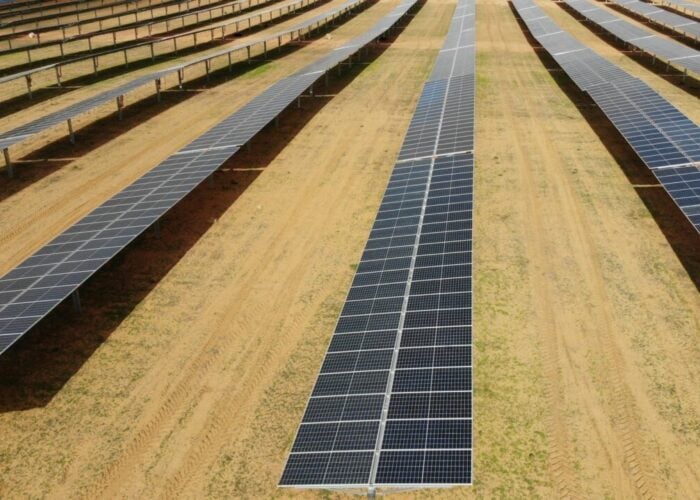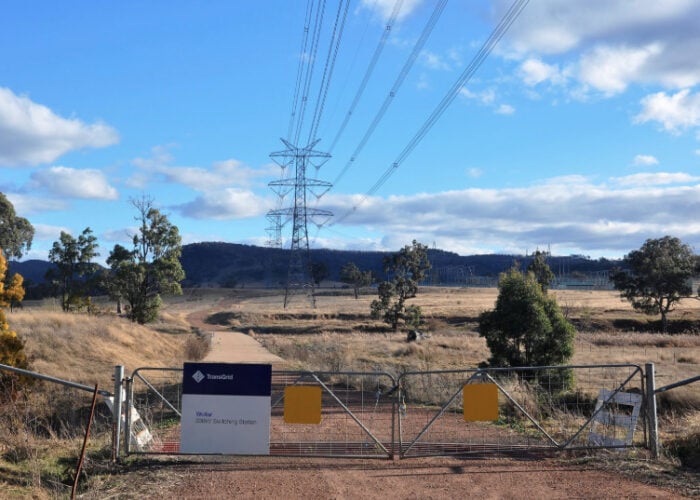
Three Californian utilities have proposed changes in order to “modernise” the US state’s net metering policy, prompting a backlash from solar campaigners.
Pacific Gas and Electric Company (PG&E), San Diego Gas & Electric Company (SDG&E) and Southern California Edison (SCE) brought forward a joint proposal on Monday (15 March) that would add monthly customer service and maintenance costs to California’s current net metering system for new adopters of residential solar systems.
Unlock unlimited access for 12 whole months of distinctive global analysis
Photovoltaics International is now included.
- Regular insight and analysis of the industry’s biggest developments
- In-depth interviews with the industry’s leading figures
- Unlimited digital access to the PV Tech Power journal catalogue
- Unlimited digital access to the Photovoltaics International journal catalogue
- Access to more than 1,000 technical papers
- Discounts on Solar Media’s portfolio of events, in-person and virtual
The Proposal
The state’s existing program, NEM 2.0, allows solar power owners to save credits they are entitled to from excess energy over the course of the year. However, the utilities have put forward a successor to the current scheme, which will apply to new solar customers from November 2021. The new proposal, NEM 3.0, would see customers balancing their accounts each month.
It also includes a monthly grid charge for customers to pay for “maintaining, operating and improving the grid”, as well as a monthly fee to cover customer service and support. Customers who do not use solar pay for grid services, but under the current rules, those who do adopt solar can offset those costs by exporting energy to the grid. The new charge, the proposal said, would ensure “equity” for Californians who do not adopt solar energy. If approved, the new policy would apply to households that adopt new solar energy installations after November 2021. Additionally, compensation for excess energy would be revised, the group said, to “more closely resemble what utilities pay for large-scale renewable energy resources”.
Net metering is widely used in the US to incentivise households to adopt residential solar, paying them for any power they feed back into the grid from their own rooftop installations, but they often provoke conflict between energy companies and utilities. California’s own net metering system was first implemented in 1995, but was revised in 2016 after a wave of mass residential solar power adoption across the state. CPUC voted to continue net metering in its modified form, NEM 2.0, in January 2016, a move that was praised by campaigners at the time. Today, more than one million homes and businesses in California have their own solar installations.
The utilities said in their proposal that the existing NEM 2.0 system is “more generous than it needs to be”, raises electricity prices for non-solar customers, and does not provide enough compensation for lower-income households. As a result, one proposal for NEM 3.0 is to reduce fixed charges for low-income households looking to install solar panels. The California Pubic Utilities’ Commission is expected to make a decision on the new policy by the third quarter of this year.
In a statement, the utilities said that rooftop solar customers “do not pay their full share for use of the grid that they rely on or for state-mandated, public policy programs that support energy efficiency or lower-income customers.”
Backlash from campaigners
The proposals have sparked a fierce backlash from solar industry campaigners, and at the time of writing, more than 9520 people have signed a petition to California governor Gavin Newsom protesting the utilities’ suggestions. The California Solar & Storage Association filed its own proposal on Monday, which said that modifying NEM would “shift the ground beneath local business, affect job roles, and reverberate beyond the state’s borders.”
In a statement this week, Dave Rosenfeld, executive director of the Solar Rights Alliance, dismissed the utilities’ suggestion that NEM disproportionately benefits wealthier Californians.
“Half of California’s rooftop solar is found in working and middle-class neighbourhoods,” Rosenfeld said.
Net metering in California is lowering electricity costs and “making it possible for more families to access the savings, resilience and other benefits of solar power”, he said.
“Voters of all backgrounds want to continue that progress. They know the utilities do not have their best interests in mind.”
An open letter to governor Newsom from campaign group Save California Solar claimed that the utilities’ NEM 3.0 policy could make rooftop solar “5 times more expensive than it is today”.
Around 40 states have a net metering policy, including Illinois, where a utility’s attempt to block full net metering for new solar customers was branded “unlawful” by campaigners, and ultimately voted down by the state’s Commerce Commission last year. The US Federal Energy Regulatory Commission (FERC) also dismissed a petition last July which called for net metering policies to come under federal jurisdiction.







